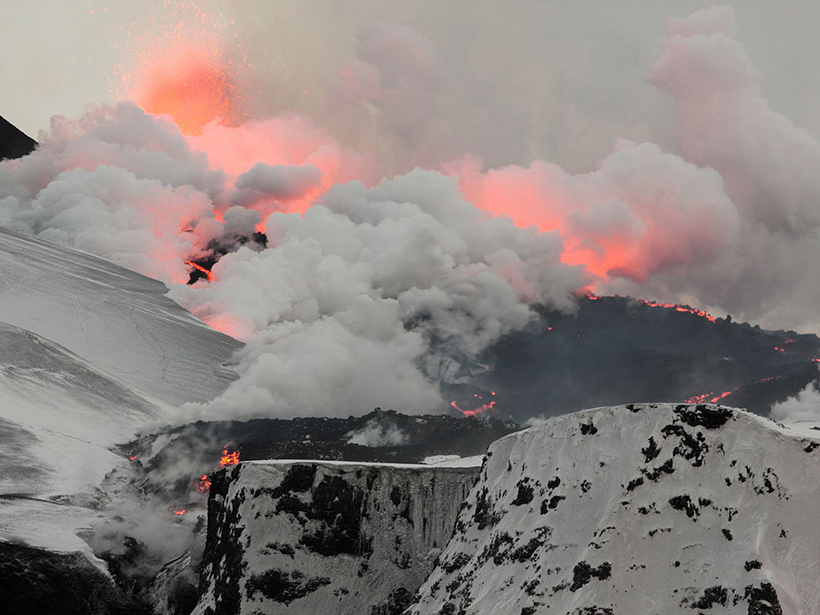The resonant vibrations of the Ross Ice Shelf in Antarctica are disturbing the atmosphere above it, creating huge ripples.
glaciers & ice sheets
Ancient Ocean Floor Seashells Improve Model of Past Glaciers
More accurate reconstruction of ice sheets over the past 150,000 years could help scientists predict future climate change.
Developments in Ice Core Research on Past Climate Change
IPICS 2016 Open Science Conference; Hobart, Australia, 7–11 March 2016
Melting Ice Could Reveal Toxic Cold War Era Waste in Greenland
Unforeseen political disputes could arise as countries assess who's responsible for the cleanup of the Cold War relics.
Tremors Reveal the Structure of Deep Glacial Shafts
Seismic waves produced by free-falling meltwater could improve understanding of glacial drainage processes.
Charting Ice Sheet Contributions to Global Sea Level Rise
An international team produced an integrated assessment of polar ice mass losses in 2012. Now efforts to provide an up-to-date assessment are under way, with an open invitation for participation.
Eyjafjallajökull Gave Lava and Ice Researchers an Eyeful
New insights from the 2010 eruption may help volcanologists determine how glaciers shaped ancient lava flows.
A River Network Preserved Beneath the Greenland Ice Sheet
An ancient drainage basin covering one fifth of Greenland predates the ice sheet and strongly influences the modern Jakobshavn Glacier, according to a new analysis of ice-penetrating radar data.
Focusing the Human Lens on Glacial Outburst Floods
To better prepare mountain communities for possible floods, experts say that it is important to understand the communities themselves.
Into the Belly of a Glacier
Ice caving started as a weekend hobby but has now blossomed into a portion of graduate student Kiya Riverman's Ph.D. research.










